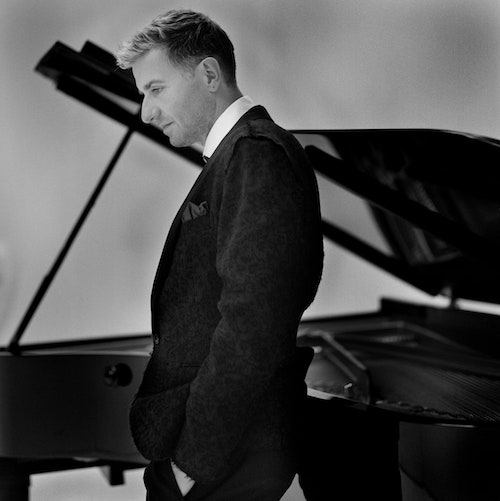Thibaudet conjures Debussy’s distinctive sonic landscapes at Carnegie Hall
As one learns to play the piano, the first hands-on encounter with the music of Claude Debussy opens a new sound world. The big box with hammers and strings, which Beethoven employed to argue, Chopin to sing, and Liszt to amaze, seems to dissolve into wind and water and clouds—if one can acquire the skills to make the magic happen.
That first encounter might well be with one of the character pieces Debussy called Préludes, following the examples of Chopin and Bach. He published them in two books of twelve each, in 1910 and 1913.
It’s a fair guess that many in the audience of Jean-Yves Thibaudet’s recital Sunday afternoon in Carnegie Hall were hearing music they knew first-hand from their piano lessons, as the French pianist elegantly traversed the entire set of 24, which range in technical difficulty from “early intermediate” to “advanced” to “you must be kidding,” and in subject matter from fog to a vaudeville show.
Pianists typically select a half dozen or so Debussy preludes to make one segment of a recital program. But as Sunday’s complete performance showed, the composer himself arranged these pieces for effective listening as a cycle, a gourmet repast with refreshing contrasts of mood and texture.
The cool grace of the first piece of Book I, “Danseuses de Delphes” (Dancing Women of Delphi) eased the listener into this composer’s distinctive sound world with soft gestures and the “ching” of antique finger cymbals. (This musical revolutionary’s fascination with the ancient world, revisited later in the cycle with the meditative “Canope” (Funerary Urn), is just one of the intriguing paradoxes of his personality.)
Thibaudet’s palette of piano colors was not the broadest, but he was keenly aware of, and able to project, the way Debussy’s writing for the instrument moves on different planes simultaneously, complementing each other like flavors in a dish. In “Danseuses,” flowing garments contrasted with gentle percussion. In the next piece, “Voiles” (Sails), boats bobbed at anchor (a deep, repeated B flat) as a puff of wind ruffled the water.
In contrast, Debussy’s interest in the motoric forces in nature could result in toccata-like piano writing, as in “Le vent dans la plaine” (The Wind in the Plain), a chromatic swirl of trills pierced by lightning-like flashes. Later in the group, Thibaudet’s technical prowess shone still brighter in “Ce qu’a vu le vent de l’ouest” (What the West Wind Saw), a stunning evocation of an Atlantic storm, gathering and bursting with full force all over the keyboard.
The set was liberally seasoned with travelogues, melodious or humorous: the composer visited Scotland in the airy “La fille aux cheveux de lin” (The Girl with the Flaxen Hair) and “Bruyères” (Heather), Spain in the brooding habanera of “La puerta del vino” (The Wine Gate) and the comical “La sérénade interrompue” (The Interrupted Serenade), Italy in the sun-drenched “Les collines d’Anacapri” (The Hills of Anacapri), England in the whimsical “Hommage à S. Pickwick Esq. P.P.M.P.C.,” and America in the banjo-picking “Minstrels” and the clown portrait “General Lavine–eccentric.”
“Les collines” and “La sérénade” saw early instances of a problem that cropped up elsewhere in the evening: Thibaudet’s ebullient fast tempos causing some details to be lost in the large hall that might have come through fine in a smaller room. All the more to be savored, then, were the layered textures of the slow pieces: the seasonal melancholy of “Feuilles mortes” (Dead Leaves) and “Des pas sur la neige” (Footsteps on the Snow), and the watery majesty of “La cathédrale engloutie” (The Engulfed Cathedral).
In addition to Mr. Pickwick and the eccentric “general,” Thibaudet drew distinctive portraits, Shakespearean or mythical, in the volatile “La danse de Puck,” the charming and vanishing “Les fées sont d’exquise danseuses” (Fairies Are Exquisite Dancers), and the teasing, not entirely benevolent “Ondine” (Water Nymph).
Debussy disliked being called an “impressionist” composer, but the label was hard to ignore in such atmospheric pieces as “Les sons et les parfums tournent dans l’air du soir” (“Sounds and scents turn in the evening air”—a line from Baudelaire), “Brouillards” (Mists), and “La terrasse des audiences du clair de lune” (The Terrace of Audiences in Moonlight). Thibaudet brought his most sensitive touch to these evanescent visions.
Compact as the program was at a little over an hour and a half with intermission, by the end the listener was ready for some flash, which the composer and the pianist thoughtfully provided with the last two preludes of Book II: the etude-like “Les tierces alternées” (Alternating Thirds), in which Thibaudet magically made a melody emerge from the blur of his overlapping hands, and the witty, fantastic, and fantastically difficult “Feux d’artifice” (Fireworks).
Called repeatedly back to the stage, the pianist responded at last with a single encore, a placid and, yes, impressionistic rendering of Liszt’s Consolation No. 3 in D-flat major.
Carnegie Hall presents pianist Schaghajegh Nosrati in a recital of works by Haydn, Bach and Alkan, 7:30 p.m. Nov. 15 in Weill Recital Hall, Carnegie Hall. carnegiehall.org.
